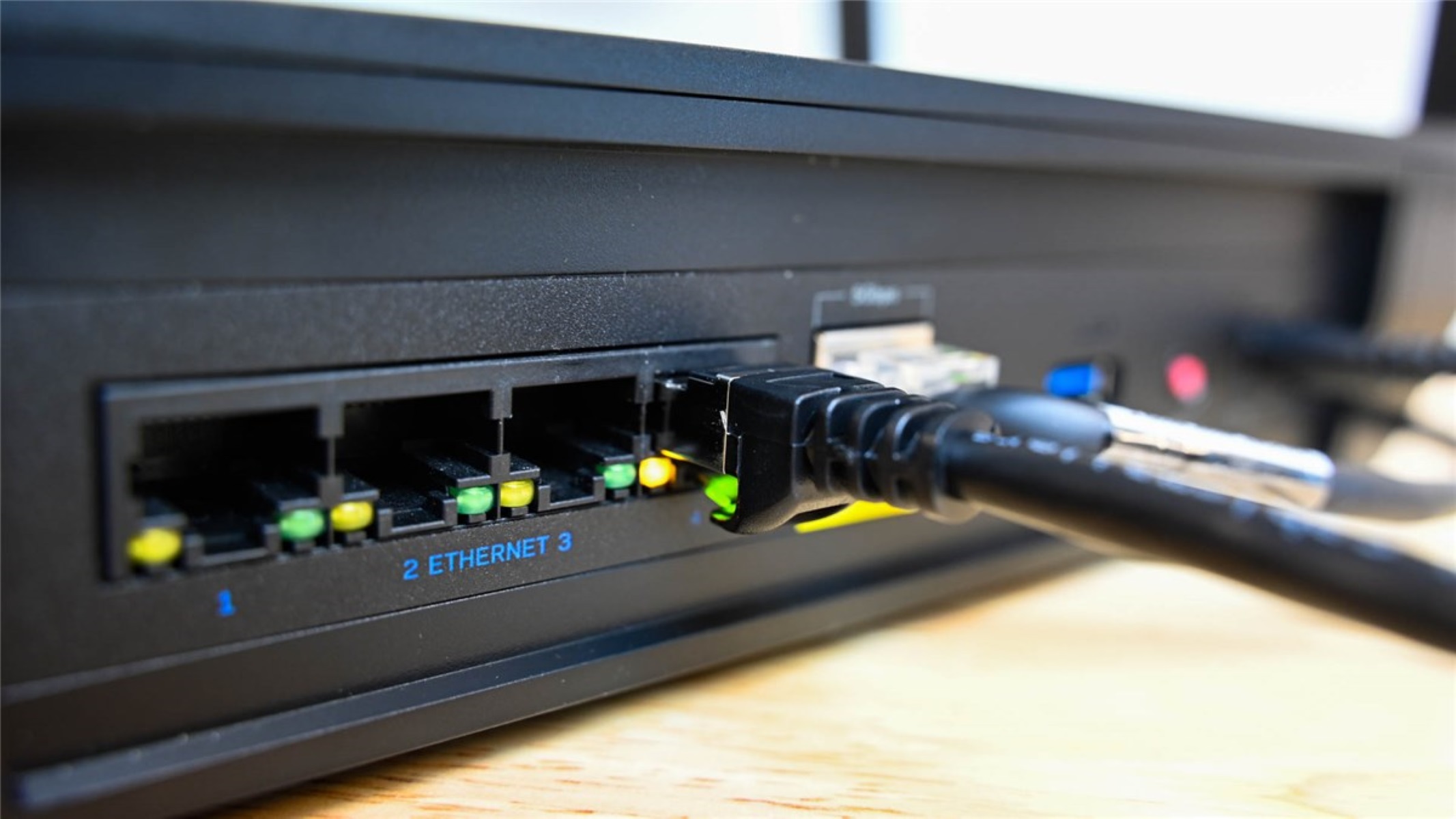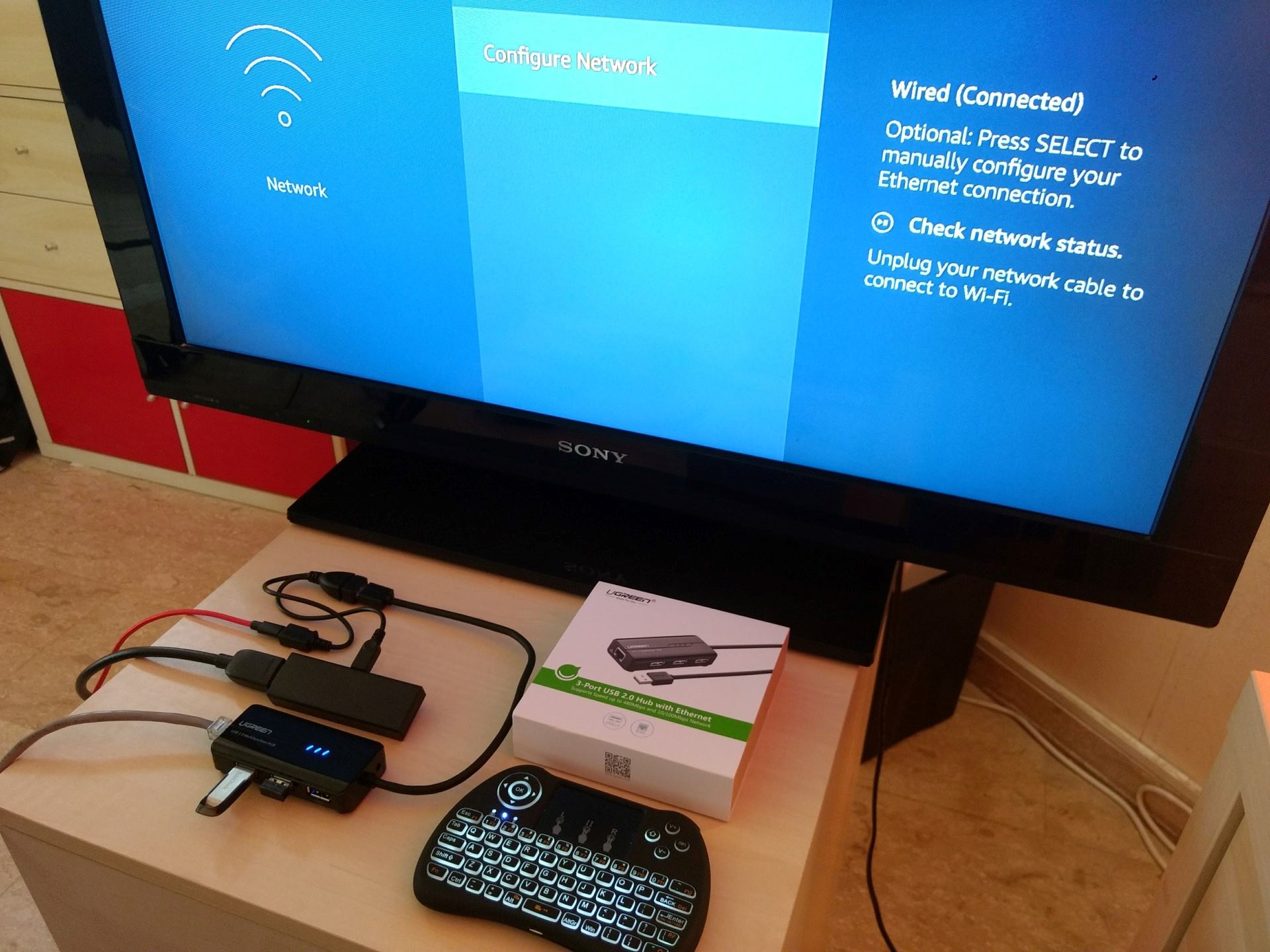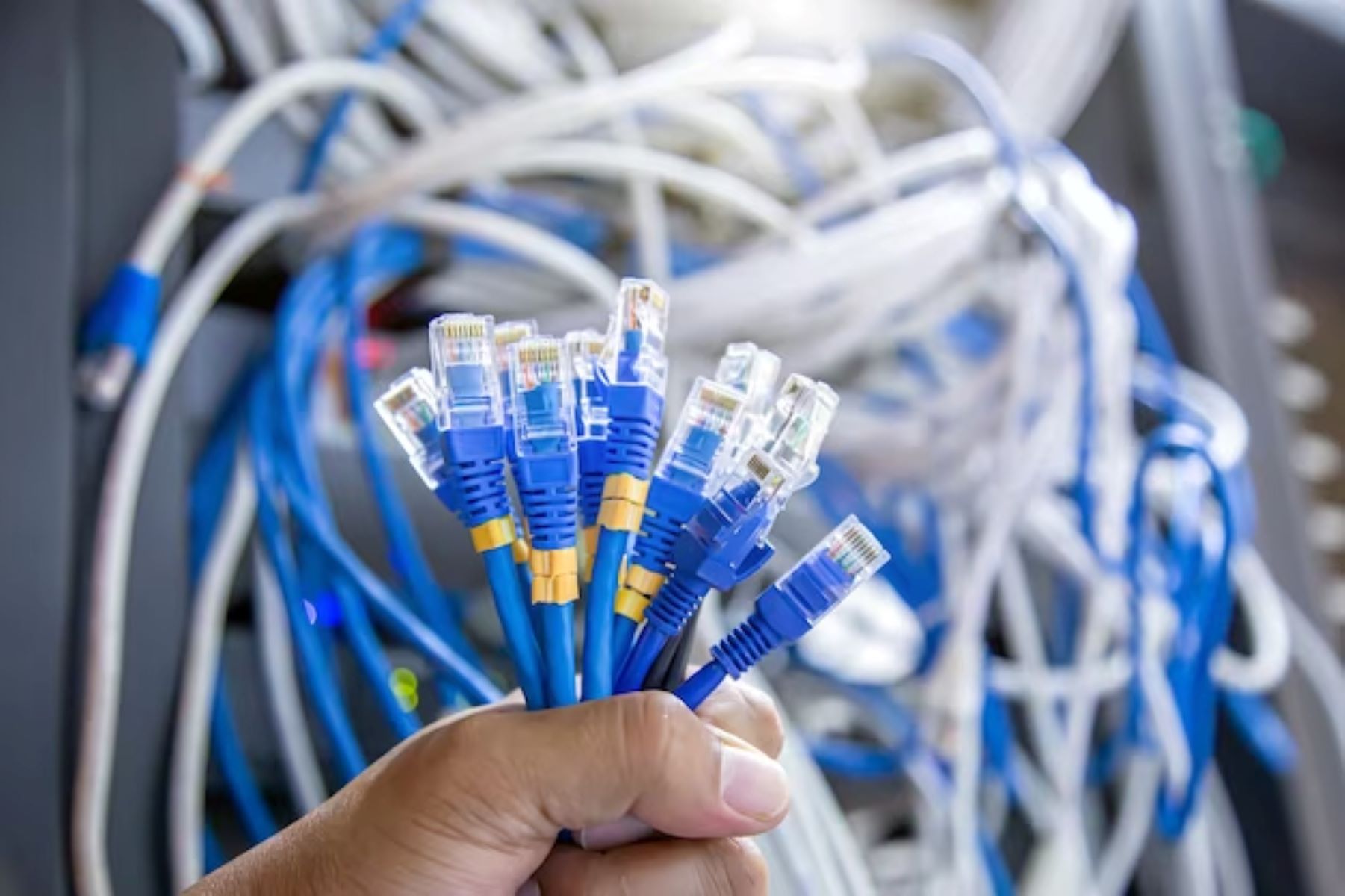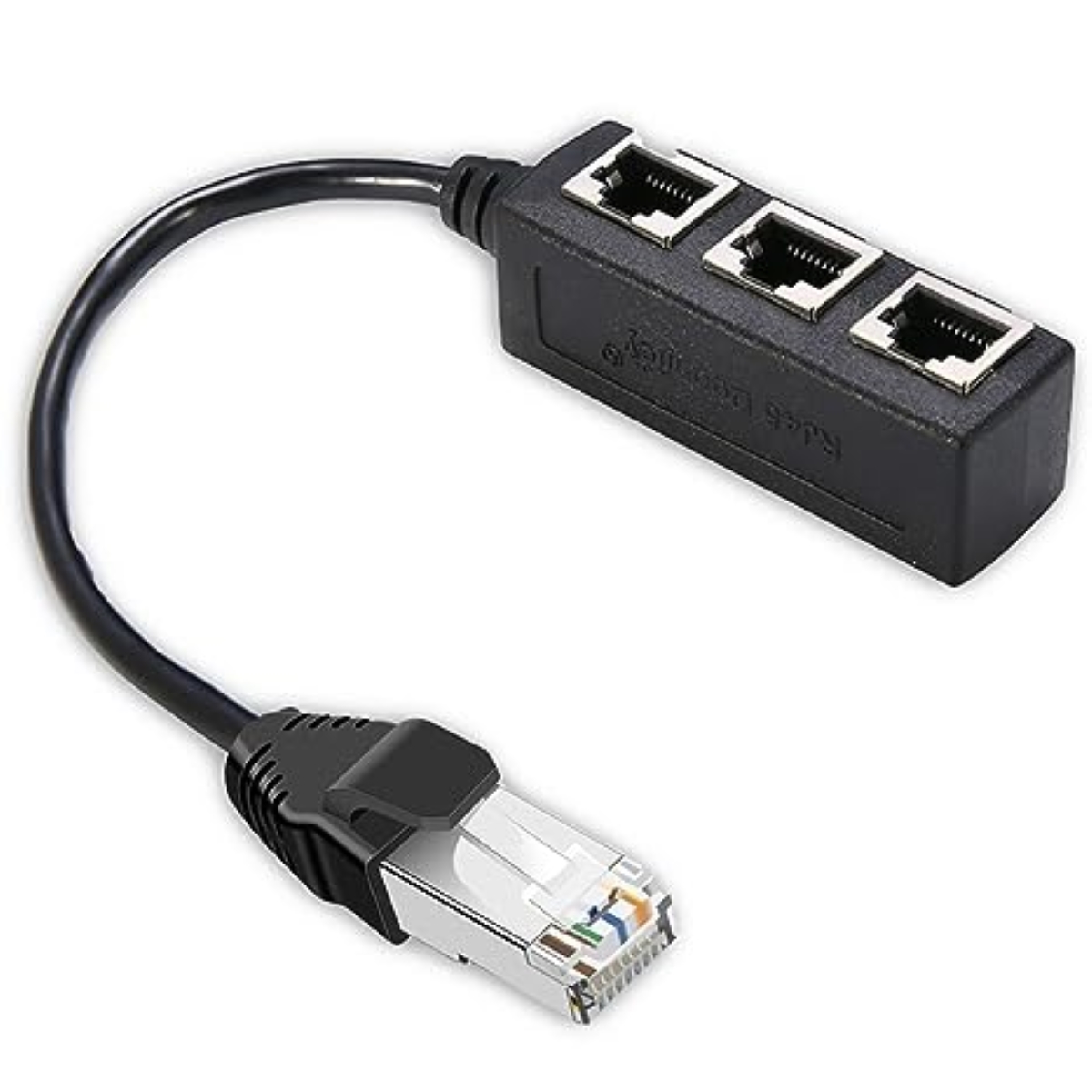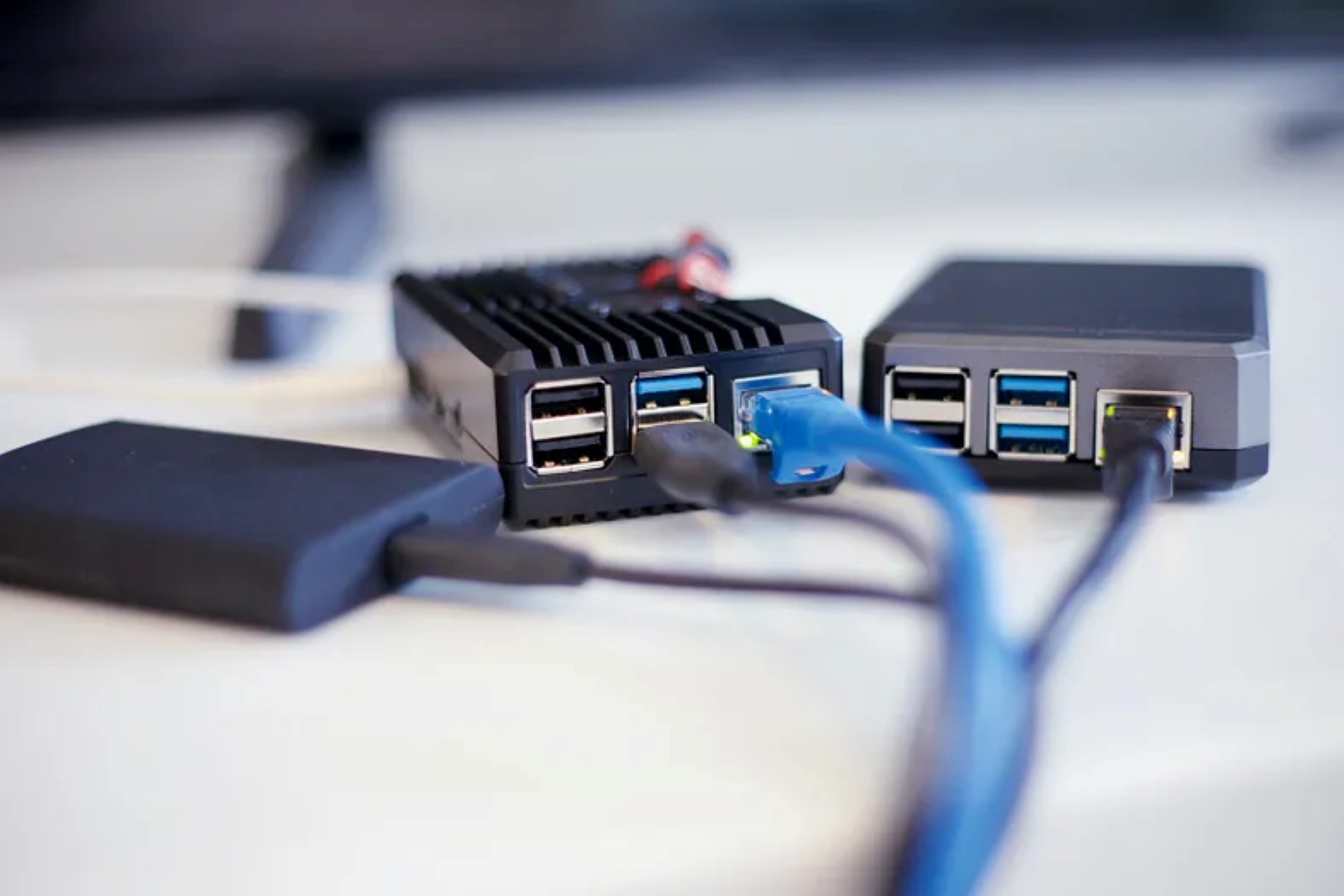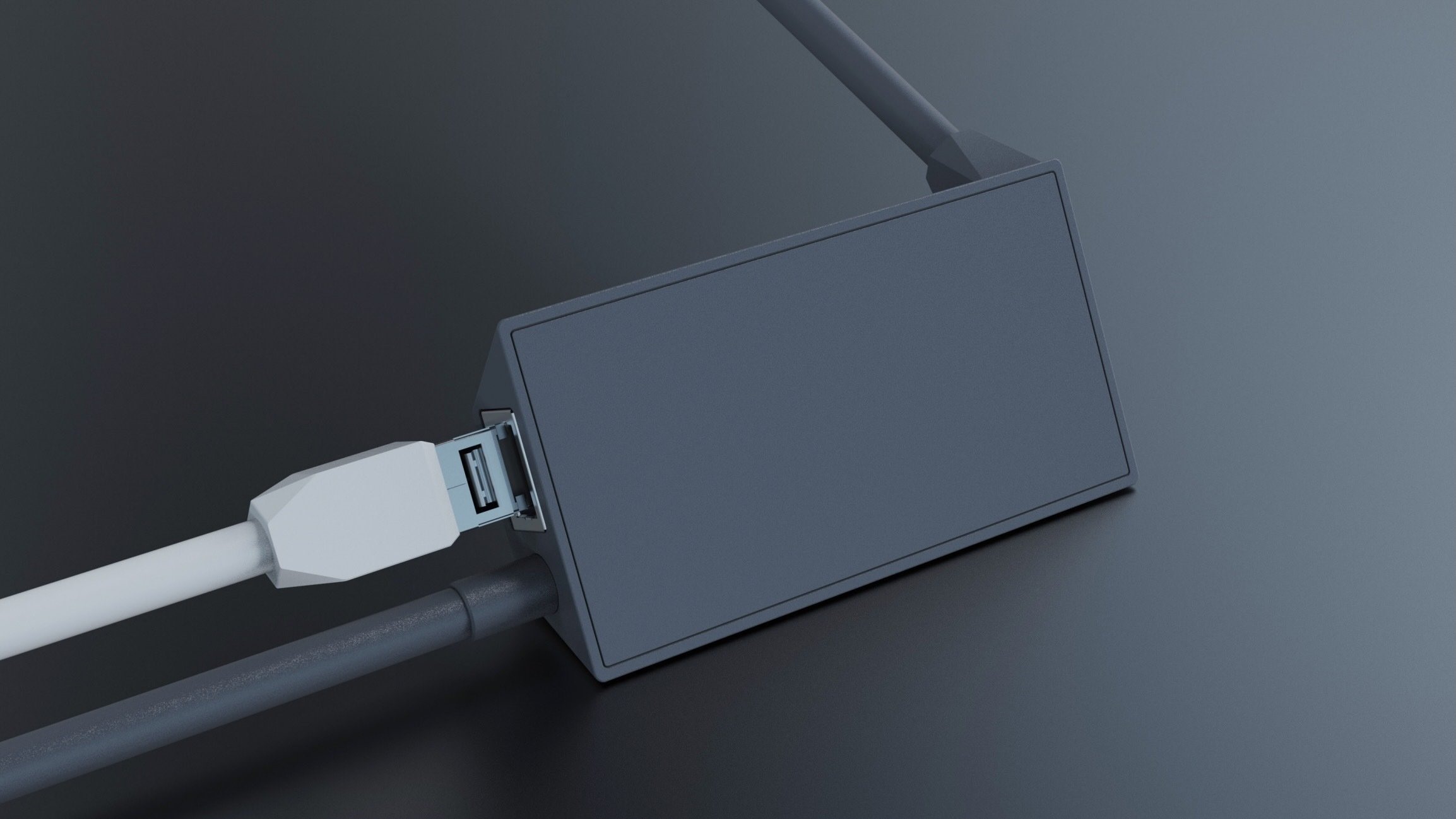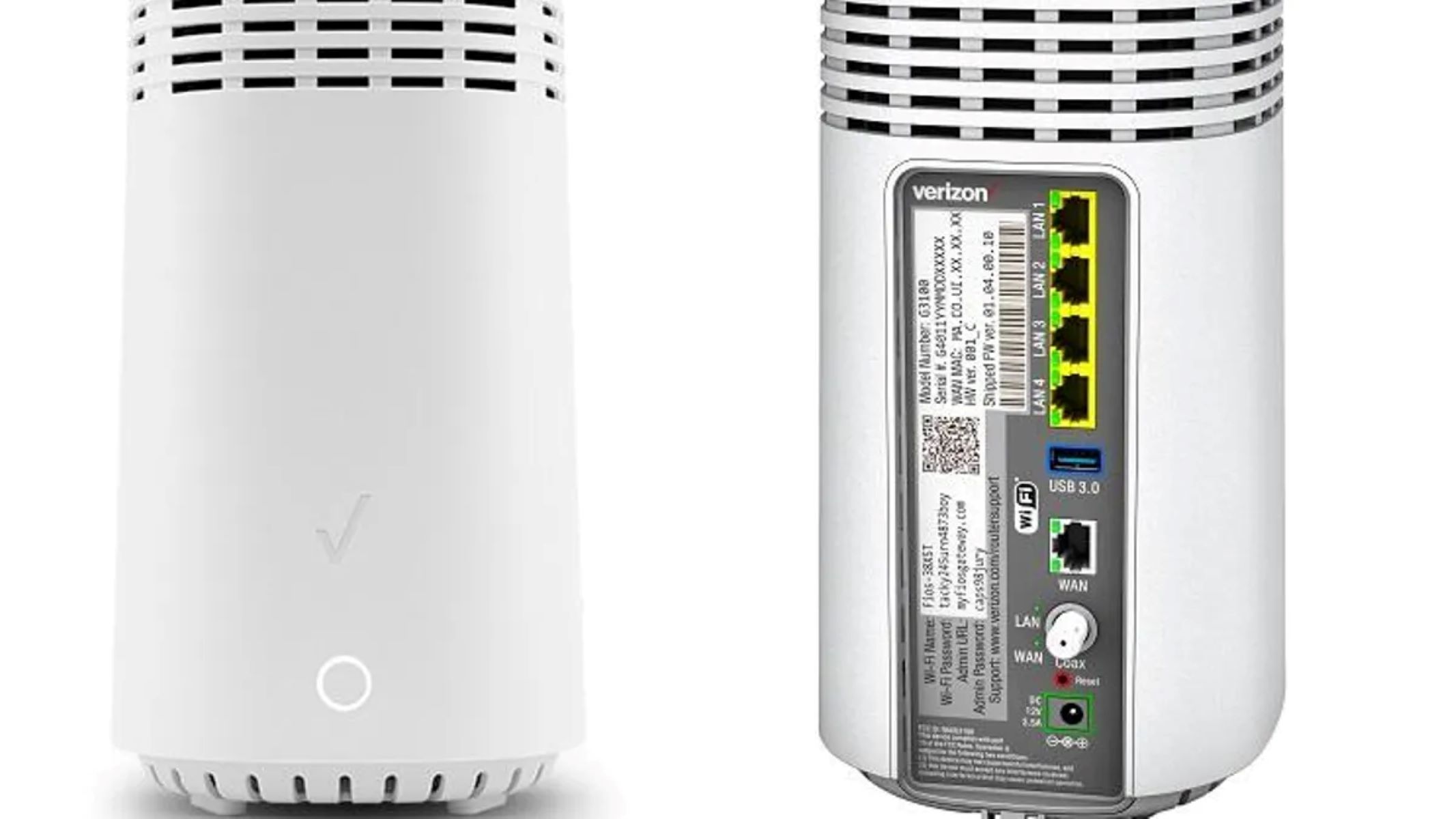Introduction
Welcome to the world of internet connectivity where ethernet has become an essential element in our daily lives. In this digital age, having a reliable and fast internet connection is crucial for both personal and professional use. Ethernet connection, often referred to simply as Ethernet, is a widely used technology that provides a wired network connection between devices.
Ethernet has emerged as the standard for wired internet connections due to its superior speed, stability, and security compared to wireless alternatives. Whether you’re streaming your favorite movies and shows, engaging in online gaming, or working from home, Ethernet ensures a seamless and uninterrupted internet experience.
In this article, we will delve deeper into the intricacies of Ethernet connection, exploring what it is, how it works, its benefits, and the various types of Ethernet cables available. We will also discuss the differences between Ethernet and Wi-Fi, and provide guidance on setting up and troubleshooting an Ethernet connection.
So, if you’re ready to unravel the world of Ethernet technology and optimize your internet experience, let’s dive in!
What Is Ethernet?
Ethernet is a networking technology that enables the transfer of data between devices over a local area network (LAN). It was first developed by Xerox Corporation in the 1970s and has since evolved into the most widely used wired networking technology worldwide.
At its core, Ethernet provides a reliable and high-speed connection by using a combination of hardware components such as network interface cards (NICs), switches, and cables. It allows multiple devices, such as computers, laptops, gaming consoles, and printers, to communicate with each other and access the internet.
Ethernet operates on the principle of sending and receiving data packets. These packets are small units of data that contain the information being transmitted. The Ethernet protocol ensures that the packets are properly formatted and delivered to their intended destinations.
One of the key features of Ethernet is its ability to provide a dedicated connection to each device on the network. Unlike other networking technologies, such as Wi-Fi, Ethernet connections are not shared, ensuring a consistent and reliable data transfer without interference from other devices.
Additionally, Ethernet is known for its speed and bandwidth capabilities. It supports data transmission rates ranging from 10 Mbps (megabits per second) to 100 Gbps (gigabits per second), allowing for fast and efficient transfer of large files, streaming high-definition videos, and smooth online gaming experiences.
Moreover, Ethernet offers better security compared to wireless connections. Since Ethernet requires physical access to the network through cables, it is harder for unauthorized users to gain access to the network. This makes Ethernet an ideal choice for businesses and organizations that deal with sensitive and confidential data.
In summary, Ethernet is a reliable, high-speed, and secure networking technology that allows devices to communicate and share data over a local area network. Its dedicated connections, fast speeds, and enhanced security make Ethernet the preferred choice for many users who require a stable and efficient wired connection.
How Does Ethernet Work?
Understanding how Ethernet works is key to comprehending its advantages and making the most of its capabilities. Ethernet operates on a set of rules and standards that dictate how data is transmitted and received between devices on a network.
When a device, such as a computer, wants to send data to another device on the network, it first breaks the data into smaller packets. Each packet contains a portion of the data, along with addressing information, which specifies the source and destination of the packet.
The device then transmits these packets over an Ethernet cable to a switch or a router, which acts as the central hub of the network. The switch or router examines the destination address of each packet and forwards it to the appropriate device on the network.
Once the packets reach their destination, they are reassembled in the correct order, allowing the receiving device to access the original data. This data transfer process happens at an incredibly fast pace, ensuring seamless communication between devices on the Ethernet network.
Ethernet relies on various technologies to facilitate data transmission. One of the most common technologies used in Ethernet is the Carrier Sense Multiple Access with Collision Detection (CSMA/CD) protocol. This protocol ensures that multiple devices can share the same network without causing data collisions and disruptions.
In a CSMA/CD-based Ethernet network, each device listens to the network for any ongoing communication. If the network is free, a device can start transmitting its data. However, if multiple devices attempt to transmit data simultaneously and a collision occurs, the devices receive a collision notification and resend their packets after a random delay to avoid another collision.
In recent years, Ethernet has evolved and introduced faster and more efficient versions. The most common Ethernet standard used today is Gigabit Ethernet, which provides a data transmission rate of 1 Gbps. Additionally, there are faster variants such as 10 Gigabit Ethernet and even 100 Gigabit Ethernet for high-demand environments.
Overall, Ethernet works by breaking data into packets, addressing these packets, and transmitting them through switches or routers to the appropriate devices on the network. With the use of protocols like CSMA/CD, Ethernet ensures efficient and reliable data transfer between devices, making it a preferred choice for wired networking.
Benefits of Ethernet Connection
Ethernet connection offers several advantages over other types of network connections, making it a popular choice for both residential and commercial environments. Let’s explore some of the key benefits of using Ethernet:
- Reliability: Ethernet provides a highly reliable connection, as it is not susceptible to interference from other electronic devices or environmental factors. Unlike wireless connections, Ethernet ensures consistent and stable data transmission, minimizing the chances of connection drops or interruptions.
- Speed and Bandwidth: Ethernet offers superior speed and bandwidth capabilities compared to wireless connections. It supports high data transmission rates, allowing for fast file transfers, smoother streaming of high-definition content, and lag-free online gaming experiences. This is particularly beneficial for bandwidth-intensive activities and applications.
- Security: Ethernet provides enhanced security for your network. Since a physical connection is required to access the Ethernet network, unauthorized access and data breaches are less likely to occur. This makes Ethernet a more secure option for businesses and organizations that handle sensitive and confidential information.
- Low Latency: Ethernet connections have low latency, which refers to the delay in data transmission. This is crucial for applications that require real-time interaction, such as online gaming and video conferencing. With Ethernet, you can experience minimal delays and achieve more seamless and responsive communication.
- Scalability: Ethernet networks are easily scalable to accommodate growing needs. You can expand your network by adding more devices or deploying additional switches without sacrificing performance. This flexibility makes Ethernet ideal for businesses and homes that may require an increase in network capacity and the addition of new devices in the future.
- Less Interference: Unlike wireless connections, Ethernet is not susceptible to interference from neighboring networks or electronic devices. This ensures a more consistent and stable connection, especially in crowded areas or environments with high network congestion.
- Compatibility: Ethernet is widely compatible with various devices, including computers, laptops, gaming consoles, printers, and network-enabled smart devices. It can be easily integrated into existing network infrastructures and is compatible with different operating systems, making it a versatile solution for diverse environments.
In summary, Ethernet connection offers reliability, high-speed data transmission, enhanced security, low latency, scalability, reduced interference, and broad compatibility. Whether for personal or professional use, harnessing the benefits of Ethernet can greatly enhance your internet experience and ensure seamless and efficient connectivity.
Types of Ethernet Cables
When it comes to setting up an Ethernet connection, choosing the right type of Ethernet cable is essential. Various types of Ethernet cables are available, each offering different performance levels and capabilities. Let’s take a closer look at some of the common types:
- Cat 5e (Category 5e): Cat 5e cables are one of the most widely used Ethernet cables. They are capable of supporting data transmission speeds up to 1 Gbps (Gigabit per second) and are suitable for most residential and small office environments. Cat 5e cables are backward compatible with older Cat 5 cables and are relatively inexpensive.
- Cat 6 (Category 6): Cat 6 cables are an upgrade over Cat 5e cables, offering higher performance and faster data transmission speeds. They can support data rates up to 10 Gbps and provide improved crosstalk and signal-to-noise ratio. Cat 6 cables are commonly used in commercial and enterprise networks where higher bandwidth and transmission integrity are required.
- Cat 6a (Category 6a): Cat 6a cables are an enhanced version of Cat 6 cables, designed to support even higher data transmission rates and reduced crosstalk. They can handle data rates up to 10 Gbps at longer distances compared to Cat 6 cables. Cat 6a cables are often used in data centers, server rooms, and other high-demand network environments.
- Cat 7 (Category 7): Cat 7 cables are designed to handle extremely high data transmission rates and provide excellent shielding against electromagnetic interference (EMI). They can support data rates up to 10 Gbps over a maximum distance of 100 meters. Cat 7 cables are commonly used in demanding applications, such as video editing, multimedia streaming, and large-scale network installations.
- Fiber Optic Cables: Fiber optic cables use light signals instead of electrical signals to transmit data. They offer extremely high data transmission rates and have low signal loss over long distances. Fiber optic cables are commonly used in data centers, long-distance communication, and high-speed internet connections.
It’s important to note that when selecting an Ethernet cable, it’s recommended to choose a cable that matches or exceeds the requirements of your network equipment and the data transmission speeds you aim to achieve. Higher category cables, such as Cat 6 and above, are generally more future-proof and offer better performance as technology and network demands evolve.
In summary, the choice of Ethernet cable depends on factors such as desired data transmission speeds, network requirements, and environmental considerations. Cat 5e, Cat 6, Cat 6a, and Cat 7 cables are suitable for most residential and commercial applications, while fiber optic cables are preferred for high-speed and long-distance connections. By selecting the right Ethernet cable, you can ensure reliable and efficient data transmission within your network.
Ethernet vs. Wi-Fi: Which Is Better?
When it comes to choosing between Ethernet and Wi-Fi for your network connection, it’s essential to understand the strengths and limitations of each option. Let’s compare Ethernet and Wi-Fi across various factors to determine which one may be better suited for your specific needs:
- Speed and Performance: Ethernet typically offers faster and more consistent data transmission speeds compared to Wi-Fi. With Ethernet, you can achieve higher bandwidth and experience minimal interference, resulting in smoother and more reliable connectivity.
- Stability and Reliability: Ethernet provides a more stable and reliable connection compared to Wi-Fi. Wireless signals can be affected by various factors like distance, obstacles, and electronic interference, while Ethernet connections are not exposed to these limitations, making them less prone to connection drops and disruptions.
- Security: Ethernet offers enhanced security features compared to Wi-Fi. Wireless signals can be intercepted, potentially exposing your data to unauthorized users. Ethernet connections, on the other hand, are physically wired, making it harder for individuals to gain unauthorized access to your network.
- Flexibility and Mobility: Wi-Fi provides the advantage of mobility, allowing you to connect to the internet from anywhere within the wireless network’s coverage range. Ethernet, being a wired connection, offers limited mobility as it requires physical connection through cables. However, you can still connect to an Ethernet port using a laptop or device with an Ethernet adapter.
- Scalability: Ethernet networks are easily scalable by adding switches or extending cables, allowing for seamless expansion as your network or device requirements grow. Wi-Fi networks, on the other hand, might require additional access points or signal boosters to expand coverage, which can be more complex and costly.
- Interference and Congestion: Wi-Fi networks can experience interference from neighboring networks, electronic devices, and physical barriers. Ethernet, being a wired connection, is not affected by such interference, ensuring more consistent performance, especially in crowded environments.
- Overall Use Case: Ethernet is an ideal choice for situations that require high-speed, reliable, and secure connections, such as gaming, large file transfers, and data-intensive applications. Wi-Fi is more suitable for scenarios that demand mobility and are not as dependent on high bandwidth, such as casual web browsing or lightweight internet activities.
Ultimately, both Ethernet and Wi-Fi have their own strengths and use cases. Ethernet excels in terms of speed, reliability, and security, while Wi-Fi provides convenience and mobility. The choice between the two depends on your specific needs, network requirements, and the devices you use.
In some cases, utilizing a combination of both Ethernet and Wi-Fi connections can offer the best of both worlds. For example, you can use Ethernet for stationary devices that require high bandwidth and reliability, while using Wi-Fi for mobile devices or areas where wired connections are not feasible.
Setting Up an Ethernet Connection
Setting up an Ethernet connection is relatively straightforward and can be done in a few simple steps. Here’s a general guide to help you get started:
- Check Router Compatibility: Ensure that your router supports Ethernet connectivity. Most modern routers have Ethernet ports available, which can be used to establish a wired connection.
- Pick the Right Ethernet Cable: Select the appropriate Ethernet cable for your connection. Depending on your network requirements, opt for a suitable category cable such as Cat 5e, Cat 6, or higher. Ensure that the cable length is sufficient to reach from your device to the router or network switch.
- Connect the Ethernet Cable: Connect one end of the Ethernet cable to the Ethernet port on your device, such as a computer or gaming console. Plug the other end of the cable into an available Ethernet port on the router or network switch.
- Configure Your Device: In most cases, your device will automatically detect the Ethernet connection and configure the network settings accordingly. However, if you encounter any issues, you may need to manually set up the network connection on your device. Consult the device’s user manual or the manufacturer’s website for guidance on network configuration.
- Test the Connection: Once the physical connection is established, verify the connectivity by opening a web browser or accessing network resources. If the connection is successful, you should be able to browse the internet or access local network devices.
- Secure the Connection: To ensure the security of your Ethernet connection, consider enabling necessary security measures on your router, such as setting up a strong password and enabling encryption protocols like WPA2-PSK. This will help protect your network against unauthorized access.
It’s important to note that in some cases, you may need to consult the documentation provided with your specific devices or seek assistance from the manufacturer’s support channels for any device-specific setup instructions.
Additionally, if you want to connect multiple devices to your Ethernet network, you will need a network switch or a router with multiple Ethernet ports. These devices allow you to expand the number of Ethernet connections available and effectively distribute the network connection to various devices.
By following these steps and ensuring the proper setup of your Ethernet connection, you can enjoy the benefits of a reliable, high-speed, and secure network connection in your home or office environment.
Troubleshooting Ethernet Connection Issues
While Ethernet connections are generally reliable, there can still be instances where you might encounter issues. Whether it’s a loss of connection, slow speeds, or other connectivity problems, troubleshooting these issues can help you get your Ethernet connection back up and running smoothly. Here are some common troubleshooting steps to follow:
- Check Physical Connections: Ensure that all Ethernet cables are securely plugged into the correct ports on both your device and the router or switch. Sometimes, loose or disconnected cables can result in a loss of connection.
- Restart Your Equipment: Power cycle your router, modem, and any other network devices by turning them off, waiting for a few seconds, and then turning them back on. This can help refresh the connection and resolve temporary issues.
- Replace Ethernet Cable: If you suspect a faulty cable, try using a different Ethernet cable to rule out any issues with the cable itself. Sometimes, damaged or old cables can lead to connectivity problems.
- Update Device Drivers: Ensure that the drivers for your network adapter are up to date. Outdated or incompatible drivers can cause connectivity issues. Check the manufacturer’s website for the latest drivers and install them if necessary.
- Disable and Enable Network Adapter: In your device’s network settings, disable the Ethernet adapter, wait a few seconds, and then re-enable it. This can help refresh the network connection and resolve any temporary conflicts.
- Check Network Configuration: Ensure that your device’s network settings are correctly configured. Ensure that the Ethernet connection is set to obtain an IP address automatically (DHCP) unless you have specific network requirements that require manual configuration.
- Scan for Malware: Run a thorough scan of your device using reliable antivirus or anti-malware software. Malicious software can sometimes interfere with network connectivity, so it’s essential to ensure your system is clean.
- Reset Router: If other devices on the network are experiencing connectivity issues, try resetting your router to its factory settings. This will revert the router back to its default configuration, and you can set it up again from scratch.
- Seek Professional Help: If you have followed all the troubleshooting steps and are still experiencing Ethernet connection issues, it may be worth contacting your internet service provider or seeking assistance from a professional network technician. They can diagnose and address any underlying issues with your network setup.
Remember, troubleshooting steps may vary depending on your specific devices and network setup. It’s always a good idea to consult the documentation provided with your devices or reach out to the manufacturer’s support for device-specific troubleshooting guidance.
By following these troubleshooting steps and identifying and addressing the root cause of your Ethernet connection issues, you can quickly resolve any problems and ensure smooth and reliable network connectivity.
Conclusion
Ethernet connection is a reliable and efficient networking solution that offers numerous benefits over wireless alternatives. With its fast speeds, stability, security, and scalability, Ethernet provides a solid foundation for seamless internet connectivity in both residential and commercial environments.
Throughout this article, we have explored what Ethernet is, how it works, and its various advantages. We have discussed the different types of Ethernet cables and compared Ethernet to Wi-Fi to help you make an informed decision about which option is better suited for your needs.
Additionally, we provided guidance on setting up an Ethernet connection, ensuring you have the necessary knowledge to establish a wired network connection in your home or office. And in the event of any troubleshooting, we shared steps to help you identify and resolve Ethernet connection issues.
Whether you opt for a Cat 5e, Cat 6, or higher category cable, or even consider using fiber optic cables for high-speed and long-distance connections, Ethernet provides a reliable, high-speed, and secure networking solution that can meet your internet and networking needs.
Remember, Ethernet offers stability, speed, security, and scalability, making it an ideal choice for demanding applications such as online gaming, video streaming, and data-intensive tasks. However, Wi-Fi remains convenient for mobile devices and areas where mobility is essential.
By following the appropriate setup procedures and troubleshooting steps, you can ensure a seamless Ethernet experience and enjoy a fast, reliable, and secure network connection.
So, whether you’re connecting your desktop computer, gaming console, or streaming device, consider harnessing the power of Ethernet connection to unlock the full potential of your internet experience.







